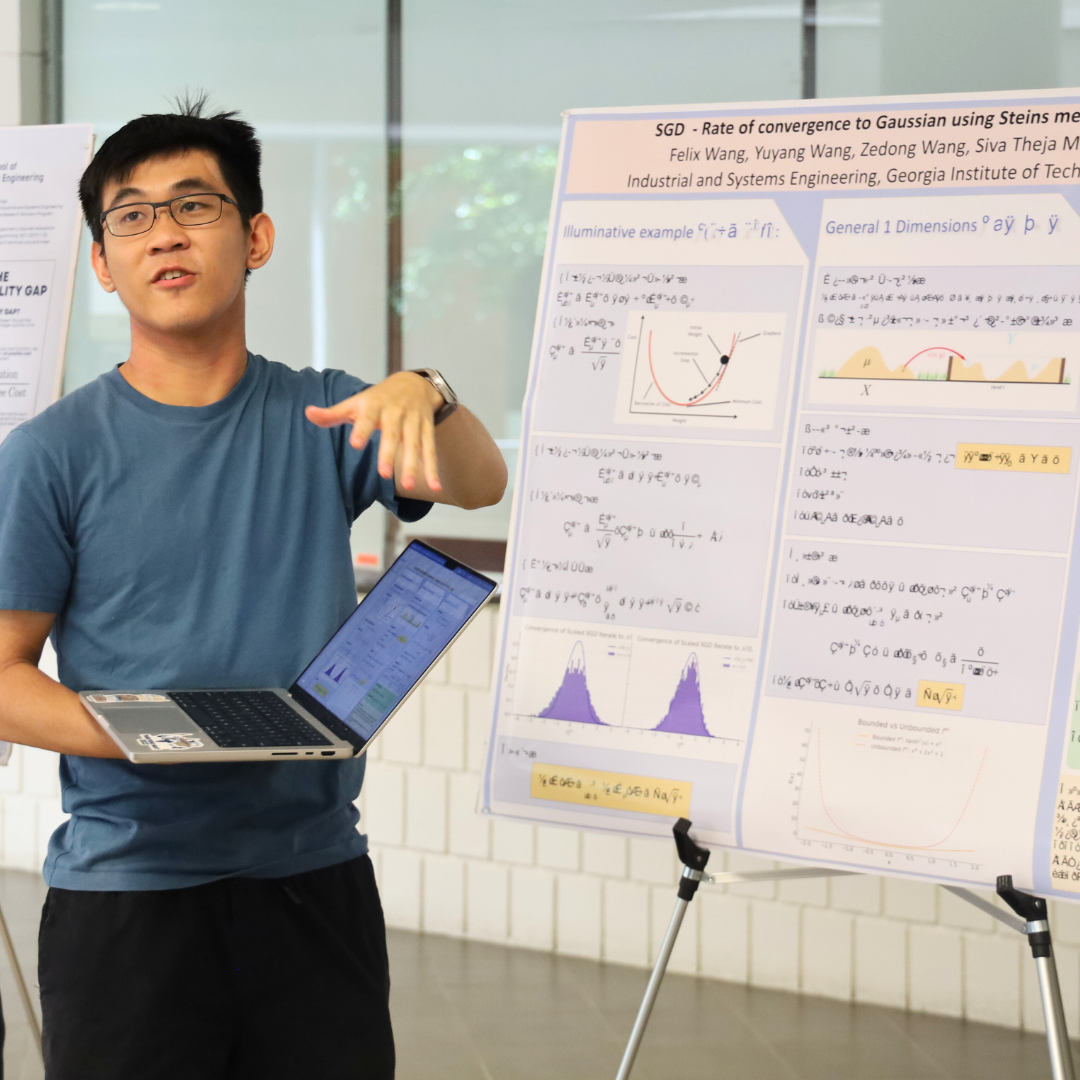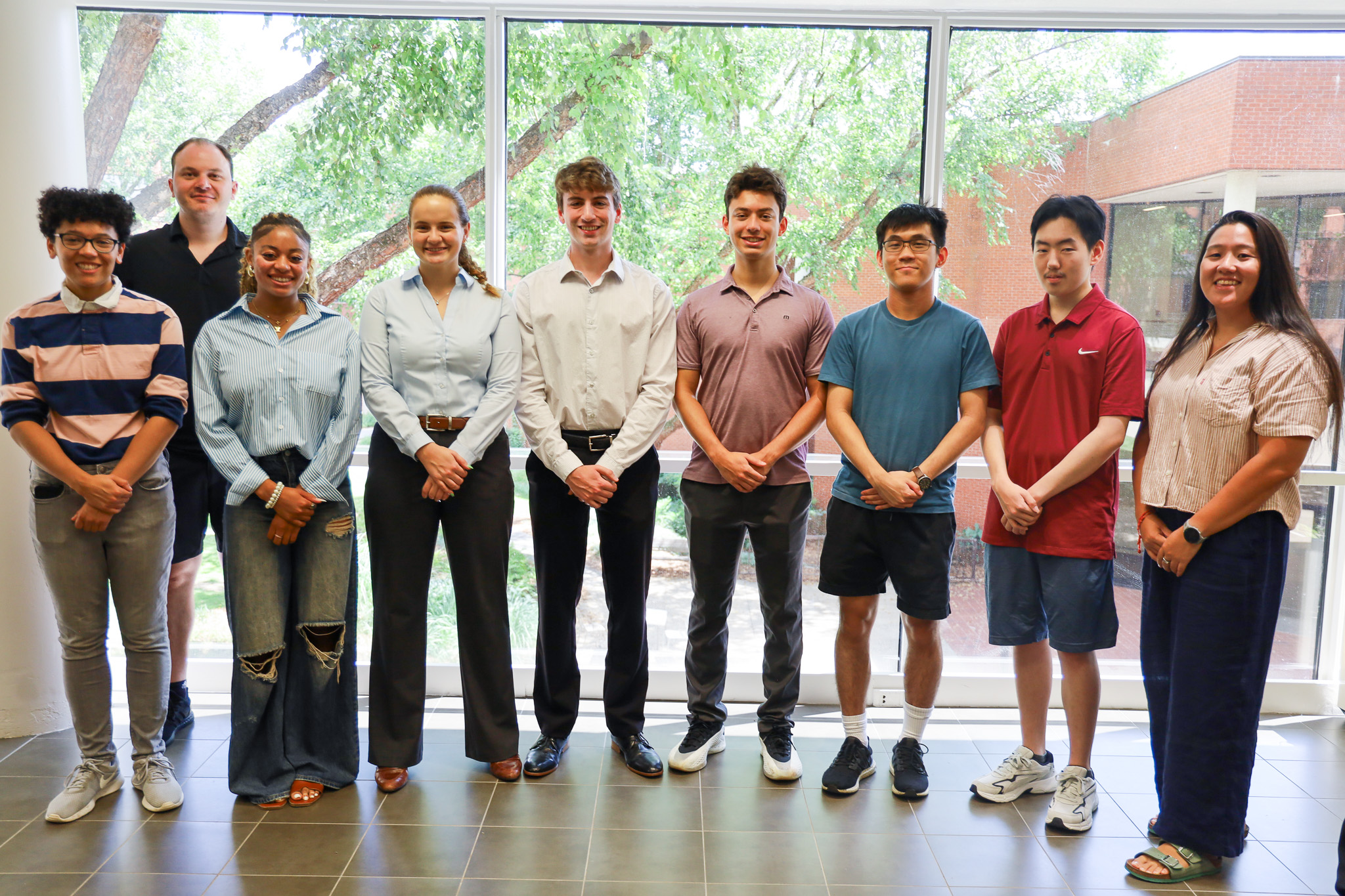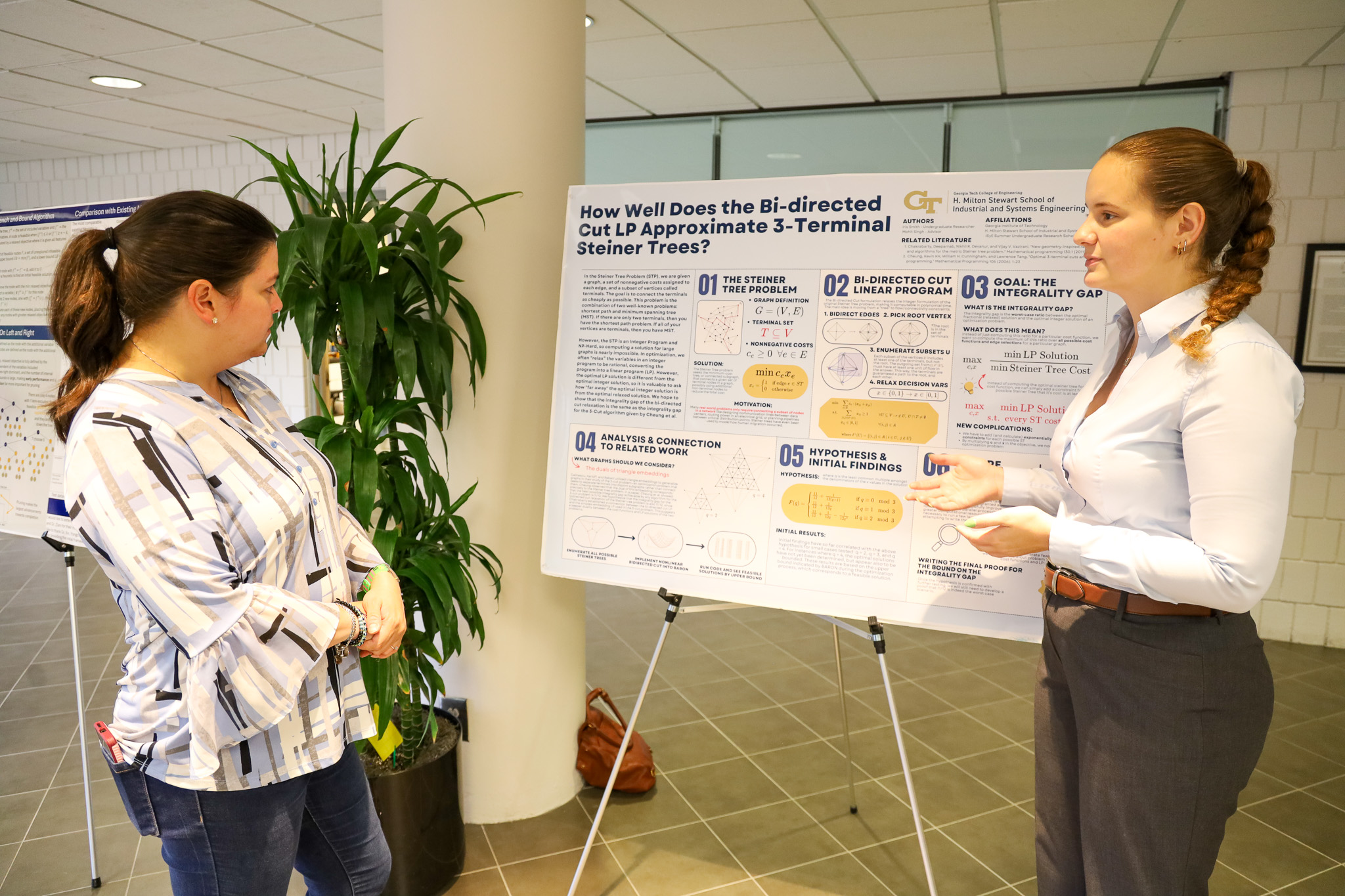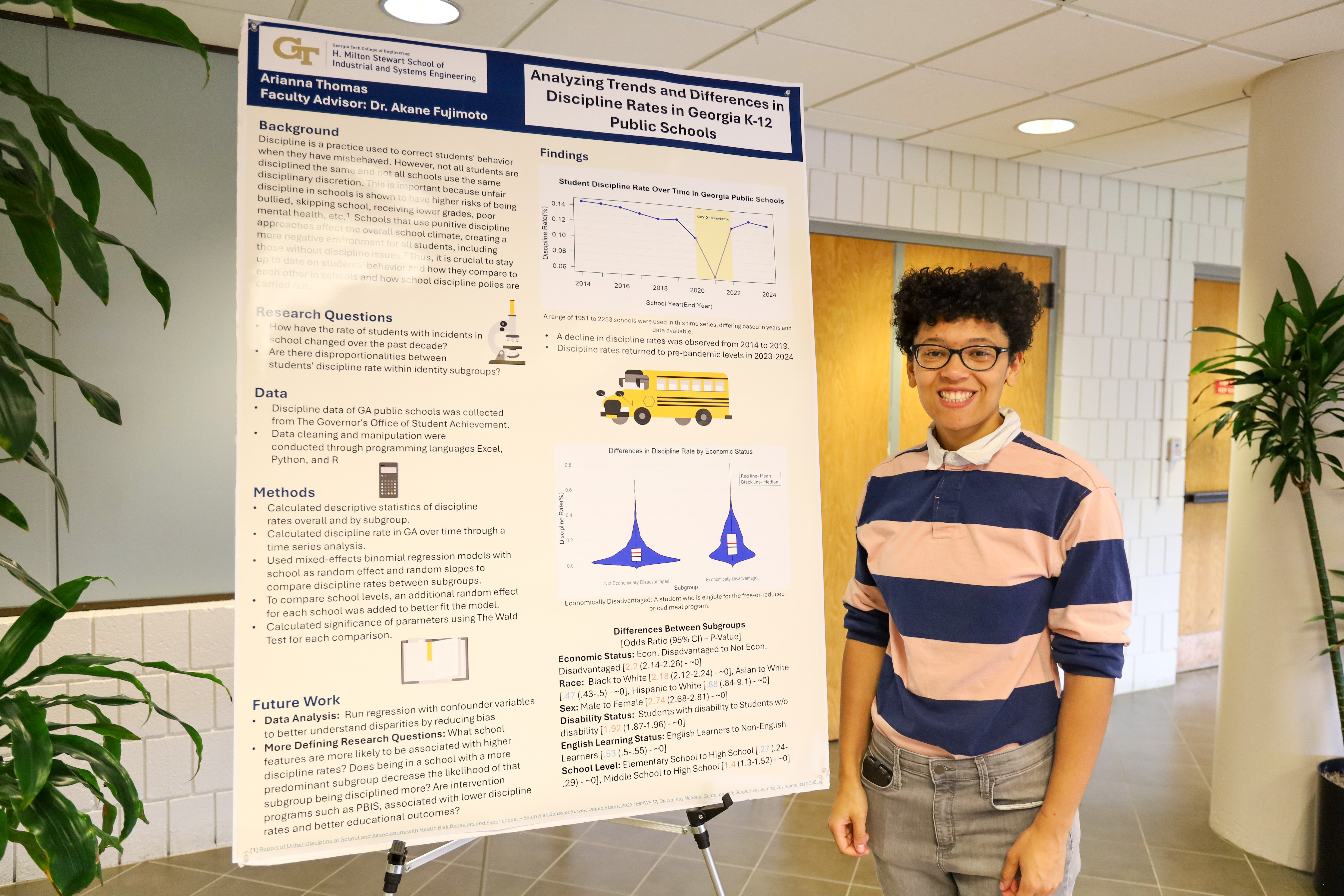The H. Milton Stewart School of Industrial and Systems Engineering (ISyE) offers the Summer Undergraduate Research Scholars (SURS), a 10-week program where students can explore creating and developing systems-thinking solutions for various research topics.
During this program, talented undergraduate students from across the nation participate in independent research under the direction of an ISyE faculty mentor. Over the course of the summer, seven scholars immersed themselves in projects ranging from applied research to algorithms and theory, representing the breadth and depth of ISyE research thrusts.
Guided by ISyE faculty, these students have the opportunity to develop technical skills and build their professional networks in one of the most unique experiences for early research development.
This year’s scholars include:
- Justin Xu – Advisor: Patrick Kastner
- Simulating Neighbor Change: A Case Study of the Atlanta Beltline
Urban infrastructure projects can have profound and lasting effects on the communities they aim to serve. Although transportation improvements often seek to improve accessibility to amenities and economic opportunities, they can also trigger unintended neighborhood changes, changing demographics, altering affordability, and influencing long-term community composition. To address this challenge, we propose a computational simulation tool that can help urban planners and policymakers better anticipate the long-term consequences of infrastructure projects.
- Simulating Neighbor Change: A Case Study of the Atlanta Beltline
- Kian Drees – Advisor: Weijun Xie
- LLM Feature Selection for Best Subset Selection
In this research, the projects expand on LLM feature selection previously used with Lasso machine learning models by combining it with best subset selection instead, using best subset selection algorithms for regression datasets and support vector machines (SVMs) for classification datasets. By combining LLM feature selection with the best subset selection, they were able to create a strong and fast framework to produce interpretable and sparse models.
- LLM Feature Selection for Best Subset Selection
- James Jones – Advisor: Juba Ziani
- A Branch and Bound Algorithm for Sparse Logistic Regression
Co-led with Juba Ziani and Weijun Xie, this project introduces a branch and bound framework for sparse logistic regression using the non-convex l_0 constraint. While following up on this project, Weijun Xie and James Jones proposed a method that offers a stable and efficient approach for feature selection, and demonstrates strong performance compared to existing heuristic techniques.
- A Branch and Bound Algorithm for Sparse Logistic Regression
- Felix Wang – Advisor: Siva Theja Maguluri
- SGD with Constant Step Sizes – Rate of Convergence to Gaussian using Steins Method
Recent work by Zaiwei Chen and Shancong Mou with Professor Siva Theja Maguluri established that stochastic gradient descent (SGD) with constant step sizes converges in distribution to a Gaussian as the step size α→0. However, their analysis does not quantify the rate of convergence between distributions. This work aims to fill this gap by developing a Stein’s method-based framework to analyze the convergence of SGD in Wasserstein distance.
- SGD with Constant Step Sizes – Rate of Convergence to Gaussian using Steins Method
- Arianna Thomas – Advisor: Akane Fujimoto Wakabayashi
- Analyzing Trends and Differences in Discipline Rates in Georgia K-12 Public Schools
This study focuses on examining disciplinary trends in Georgia’s K-12 public schools. Utilizing data collected from the Governor's Office of Student Achievement, they analyzed discipline rates over time using time series and compared rates across various demographic groups using mixed-effects binomial regression models.
- Analyzing Trends and Differences in Discipline Rates in Georgia K-12 Public Schools
- Iris Smith – Advisor: Mohit Singh
- How Well Does the Bi-directed Cut LP Approximate 3-Terminal Steiner Trees?
This project studies the Steiner tree problem, which asks for the minimum-cost network connecting a set of terminal nodes in a graph, possibly using additional non-terminal nodes to reduce cost. A central focus of this work is the integrality gap, which measures the worst-case ratio between the optimal integer solution and its LP relaxation.
- How Well Does the Bi-directed Cut LP Approximate 3-Terminal Steiner Trees?
- Fabiola Belibi – Advisor: Johannes Milz
- Enhancing diagnostic Utility of Relative Energy Deficiency in Sport (RED-S) in Female Endurance Athletes via AI-supported scoring and Biometric Integration
- Relative Energy Deficiency in Sport (RED-S) represents a significant health and performance concern for athletes, particularly female endurance athletes, stemming from a chronic imbalance between energy intake and expenditure. This comprehensive research is aimed at refining a streamlined self-report questionnaire for RED-S risk assessment, enhancing its diagnostic precision through the integration of objective biometric data from wearable technologies, and development of an Artificial Intelligence (AI)-supported scoring algorithm.
- Enhancing diagnostic Utility of Relative Energy Deficiency in Sport (RED-S) in Female Endurance Athletes via AI-supported scoring and Biometric Integration
To learn more about the program and read their full project scopes, click here.



